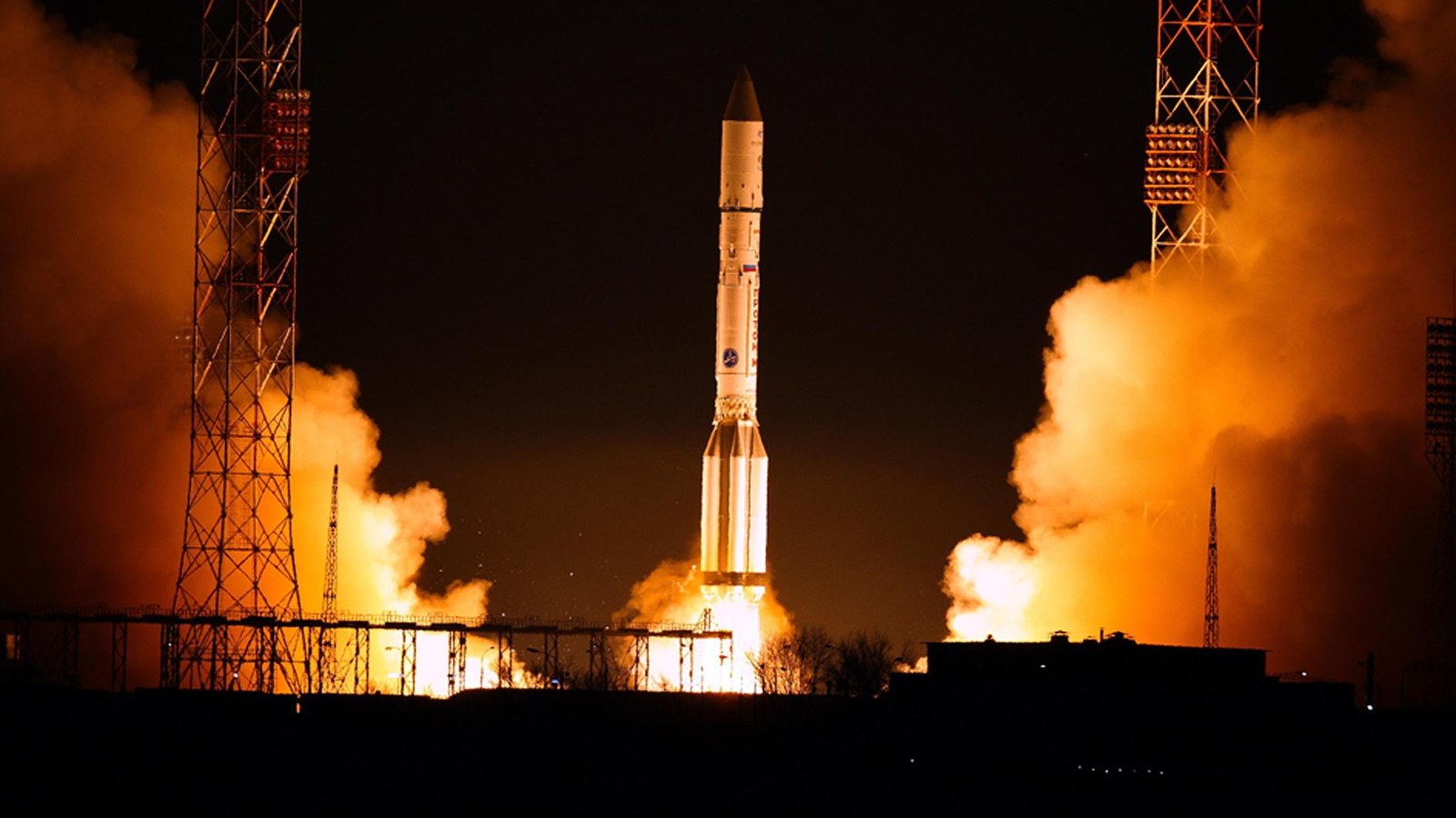Launch of Europe's 'Data Highway in Space'



The first component of Europe's 'Data Highway in Space' has been launched. The initial node of the European Data Relay System (EDRS), carried on board the Eutelsat commercial telecommunications satellite Eutelsat 9B, took off en-route to geostationary orbit – 36,000 kilometres above Earth – on 29 January 2016 at 23:20 CET from the Baikonur Cosmodrome in Kazakhstan.
"Europe's independence regarding space-based satellite communications has increased with the launch of EDRS-A. Germany has made a significant contribution to this mission with the development and construction of the laser communications terminals and the operation of an EDRS Control Center, which also promises significant commercial benefits," said Pascale Ehrenfreund, Chair of the German Aerospace Center (Deutsches Zentrum für Luft- und Raumfahrt; DLR) Executive Board.
Germany has developed and built the laser communications terminals
EDRS is considered a milestone in the field of telecommunications. As a Public-Private Partnership (PPP) between the EDRS bei der ESA (ESA) and Airbus Defence and Space, it will carry a data volume of up to 1.8 gigabits per second with a minimal time delay from space to Earth. The heart of the system, consisting of the two geostationary nodes EDRS-A and, from 2017, EDRS-C, is the laser communication terminals, developed and built in Germany.
"Germany has developed this technology over the last 25 years and, through its ESA contributions and the national space programme, has invested around 280 million euro," commented Gerd Gruppe, the DLR Executive Board Member responsible for the German Space Administration, and he added: "We are thus creating a clear competitive advantage and major efficiency gains – particularly with regard to environmental monitoring; for example, for emergency services, natural disasters, weather forecasting and the monitoring of maritime traffic."
The German Space Operations Center at the DLR site in Oberpfaffenhofen will be responsible for the monitoring of the communications payloads, and will also control the EDRS-C satellite. DLR has invested a further 8.7 million euro for the construction of the ground segment and preparations for its operation. The Bavarian State Ministry of Economics and Media, Energy and Technology (Bayerisches Staatsministerium für Wirtschaft und Medien, Energie und Technologie) has also provided 7.5 million euro.
Transporting data packets to Earth at up to 1.8 gigabits per second
Due to their perceived stationary position in space, EDRS-A and EDRS C will be able to receive high-rate communications data from low-flying Earth observation satellites and send it to Earth without delay. Therefore, the observation satellites will not – as has previously been the case – be restricted to short periods of line-of-sight contact during their flight over ground stations. EDRS uses optical laser links which, at 1.8 gigabits per second, offers a significantly higher bandwidth than was possible with conventional radio links. The laser terminals need less than one minute to establish a connection between geostationary and low-Earth orbit. In addition, the 'crowded' frequencies of conventional radio connections can be avoided. The geostationary relay satellites will send the data packets to ground stations in Europe, including the DLR facility in Weilheim, a station in Redu (Belgium) and one in Harwell (England).
Copernicus Programme's Sentinel satellites will be the first users
The initial EDRS node – EDRS-A – will commence its data relay services in the summer of 2016. The first users will be the European Commission's Copernicus satellites, Sentinel-1 and -2. The second EDRS payload, EDRS-C, will be launched from the European Spaceport in French Guiana in 2017 on board an Ariane-5 rocket. From 2018, the International Space Station (ISS) will also be able to communicate with Earth through EDRS. In its final configuration, EDRS will achieve global coverage and transmit more than 50 terabytes of data per day from Earth orbit.
Nine hours after the launch – on 30 January 2016 at 08:32 CET – the Eutelsat 9B Satellite with its EDRS-A payload separated from its Proton launcher. The satellite's final position will be at an altitude of 36,000 kilometres above the equator at nine degrees east, roughly corresponding to the longitude of Stuttgart. The first orbital tests of the EDRS-A laser link are scheduled for 22 February.
